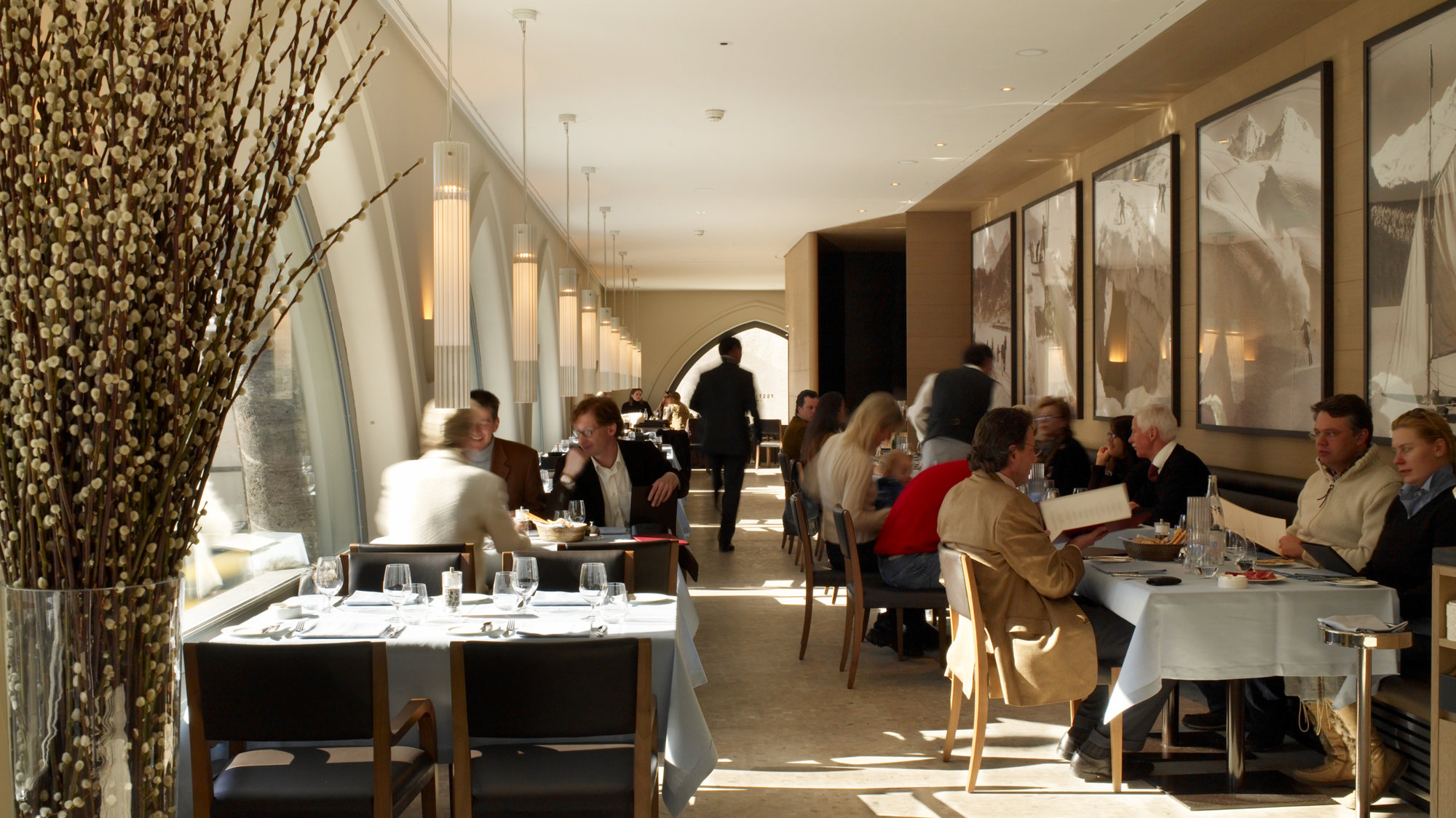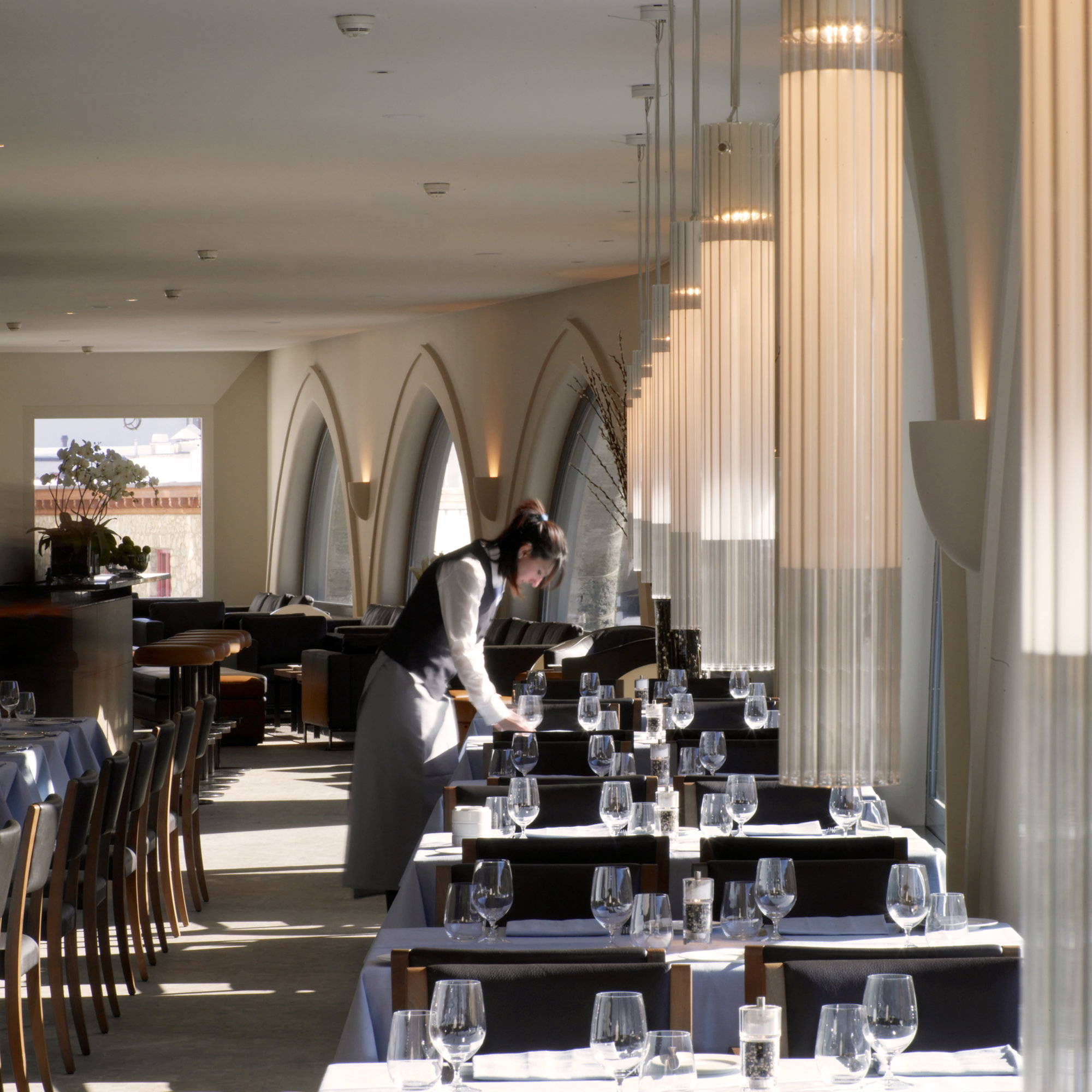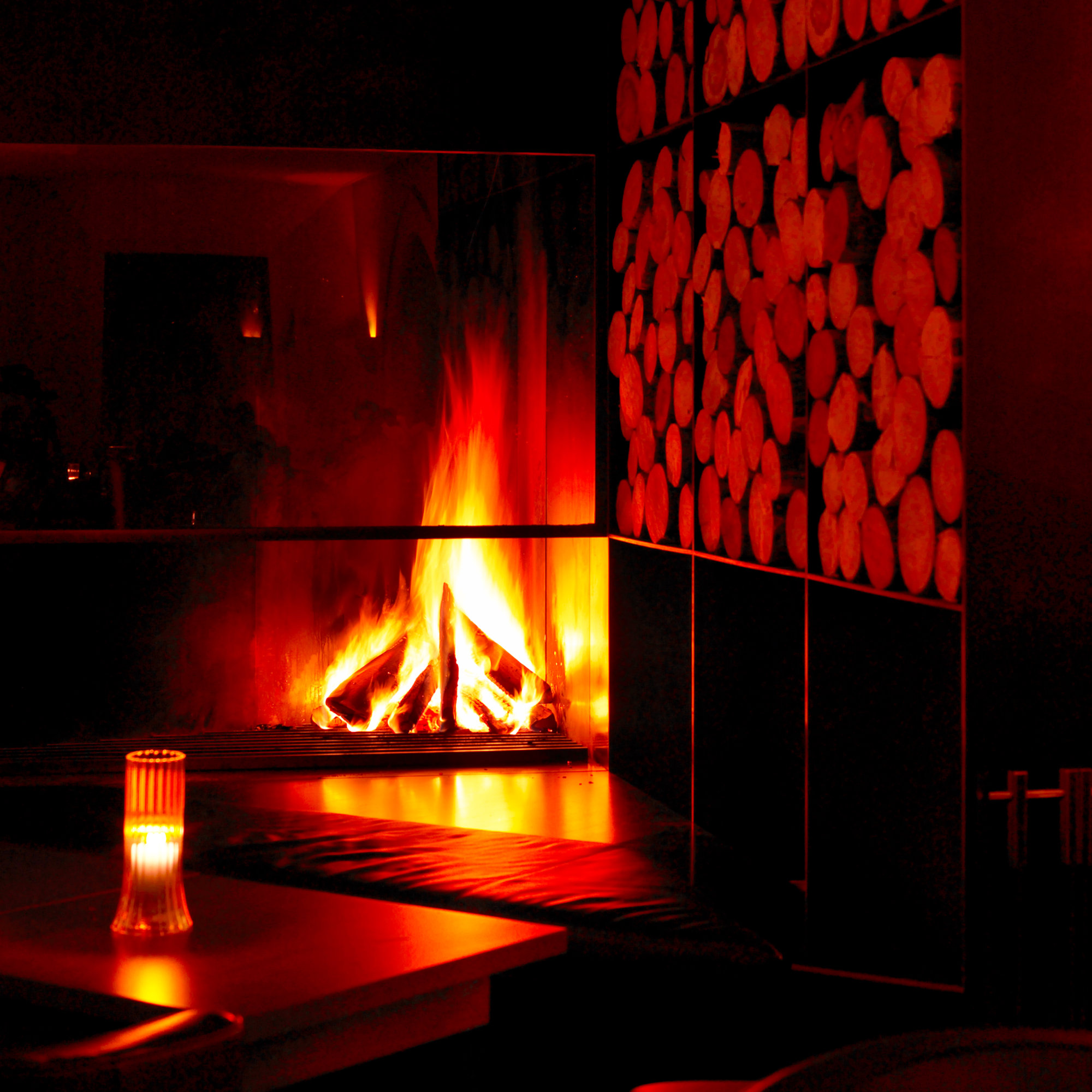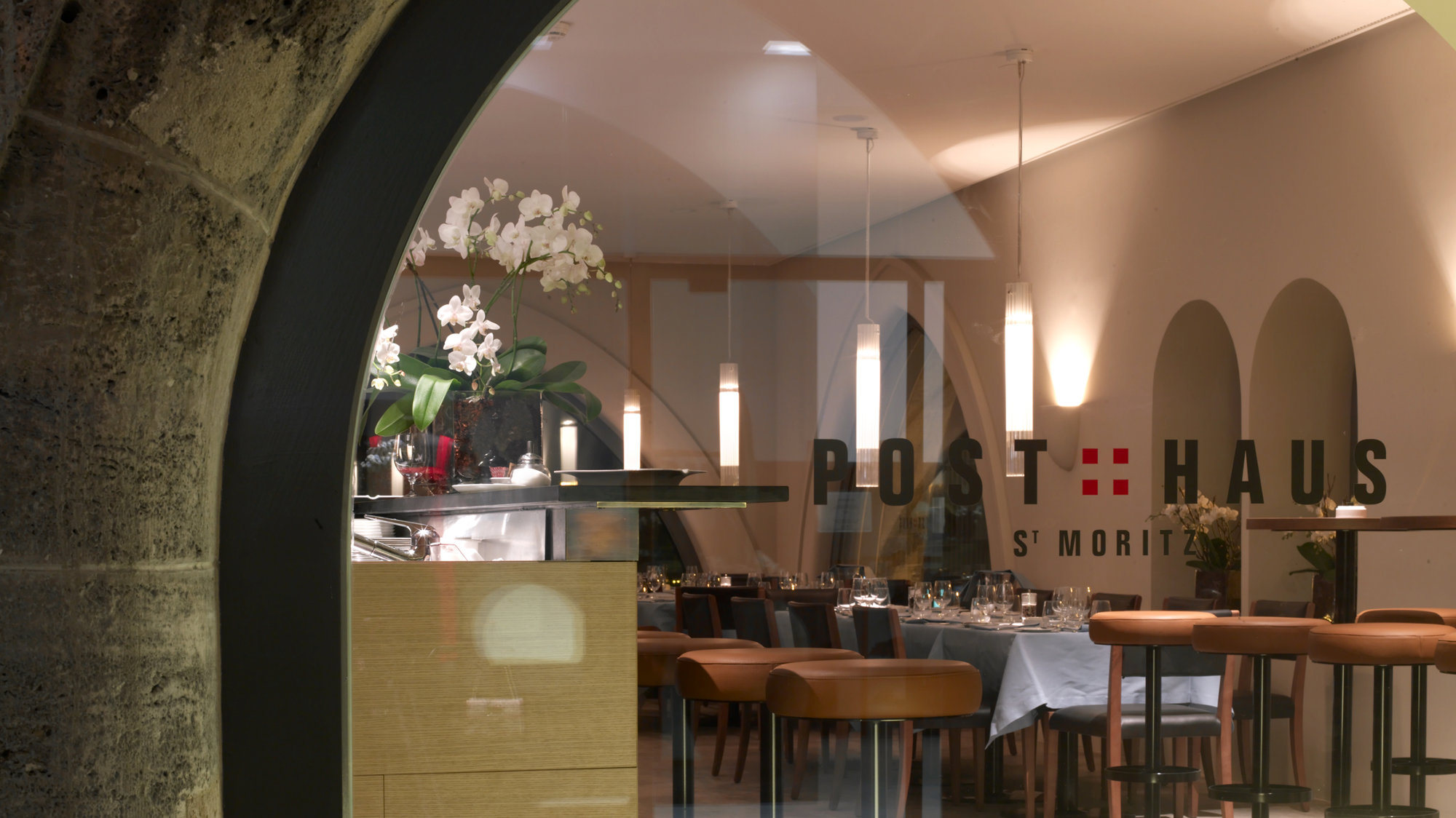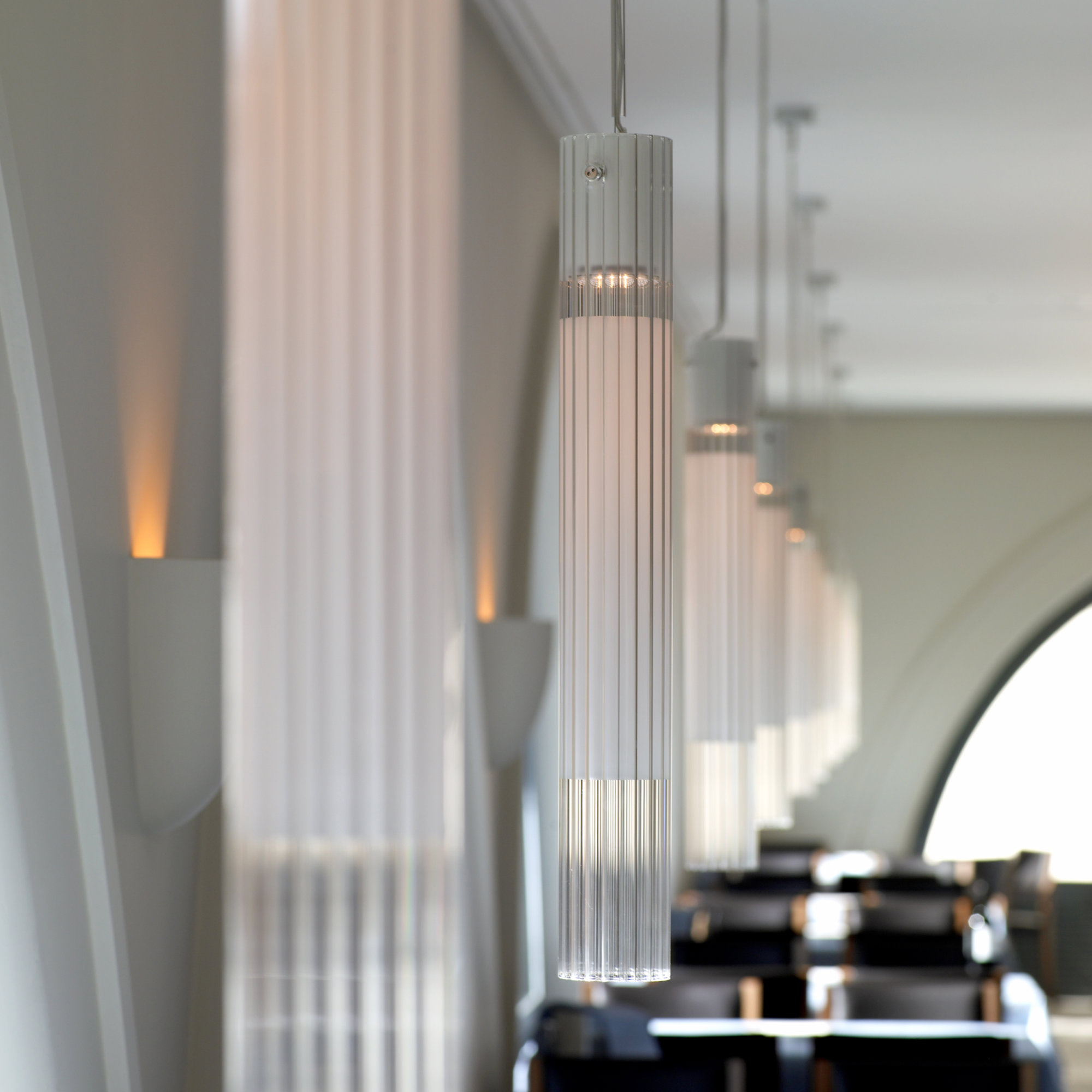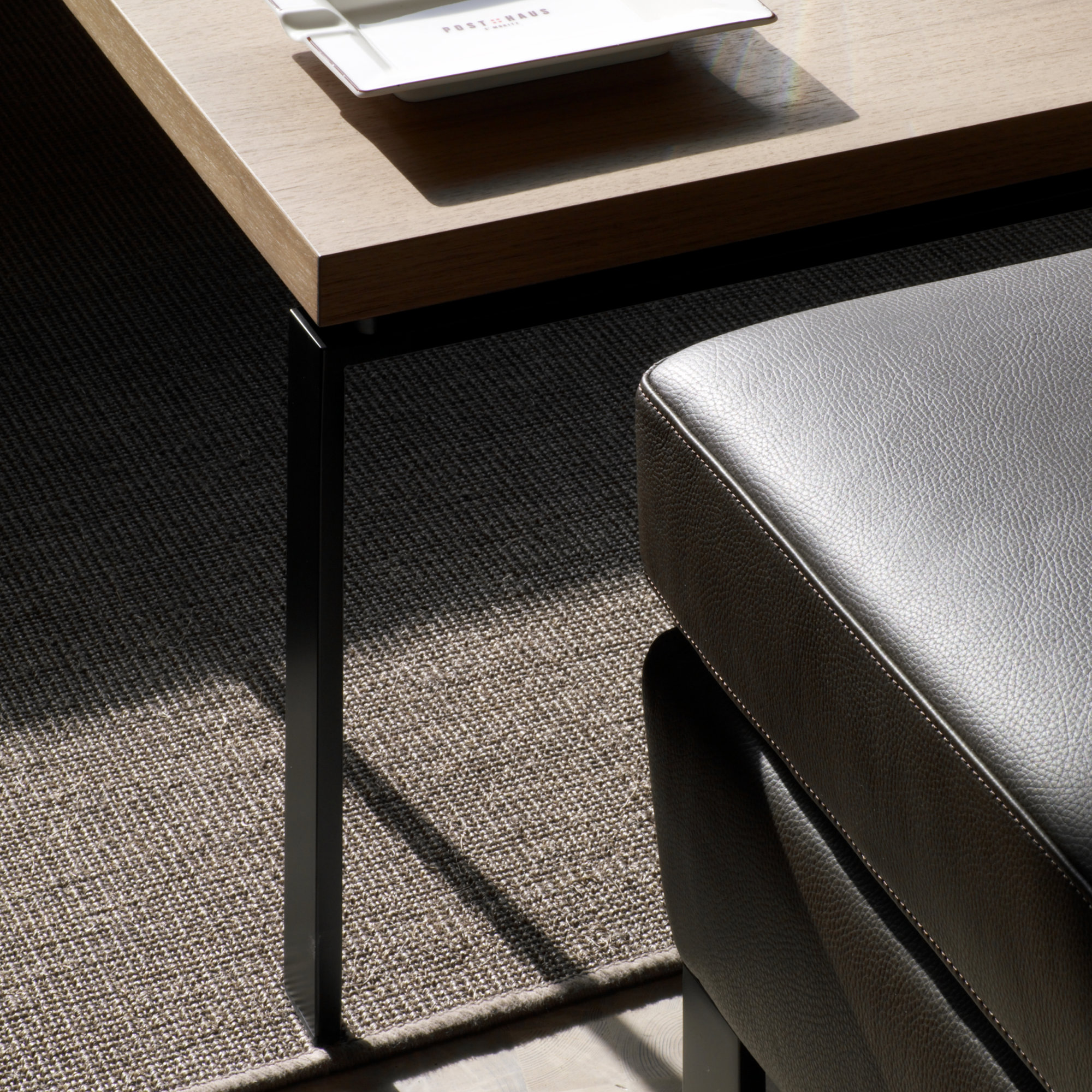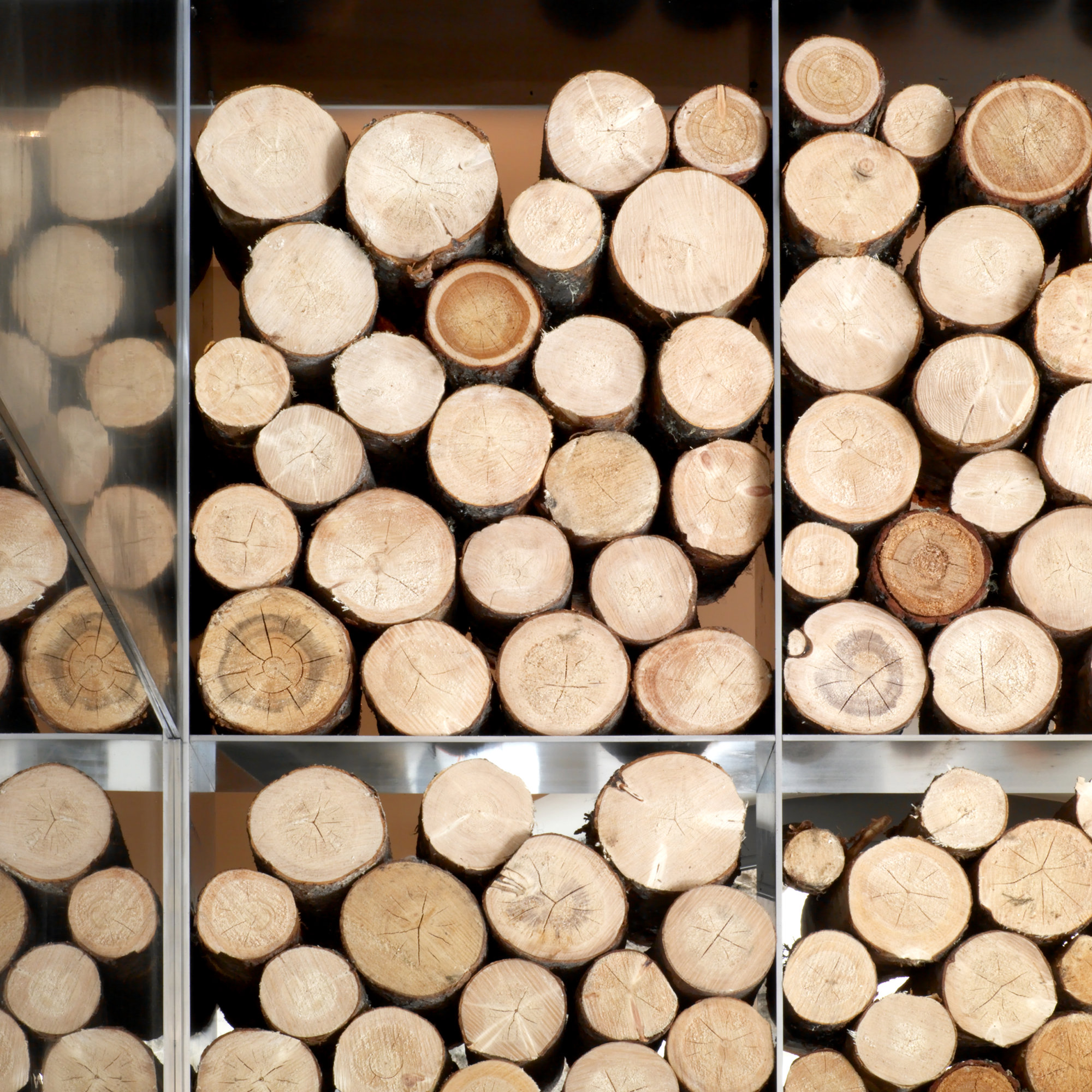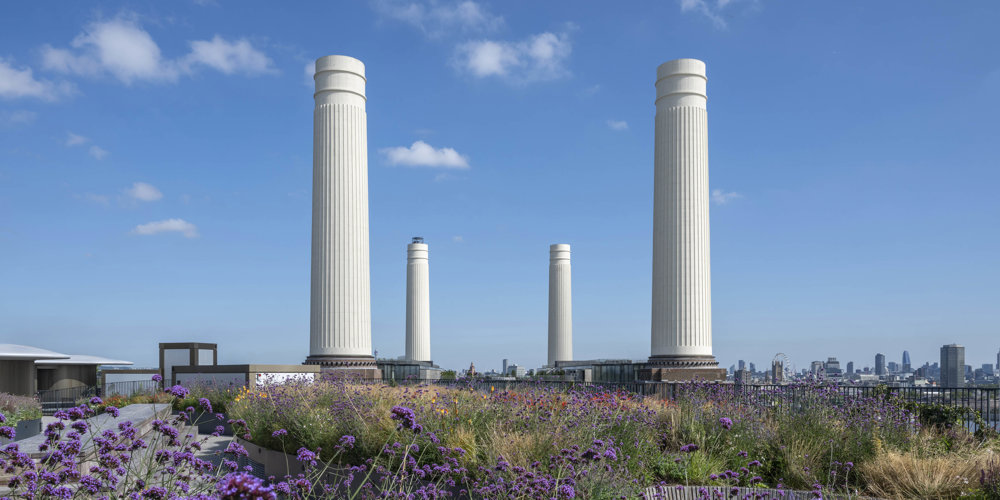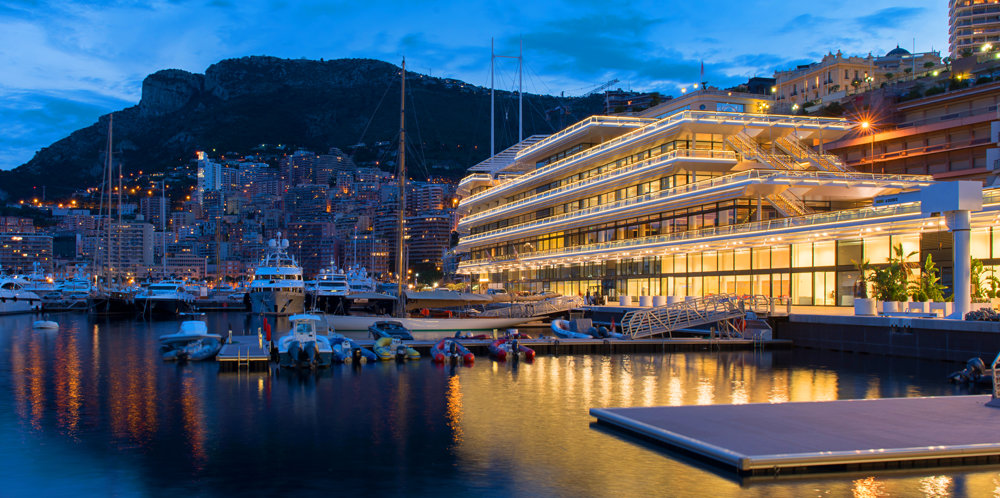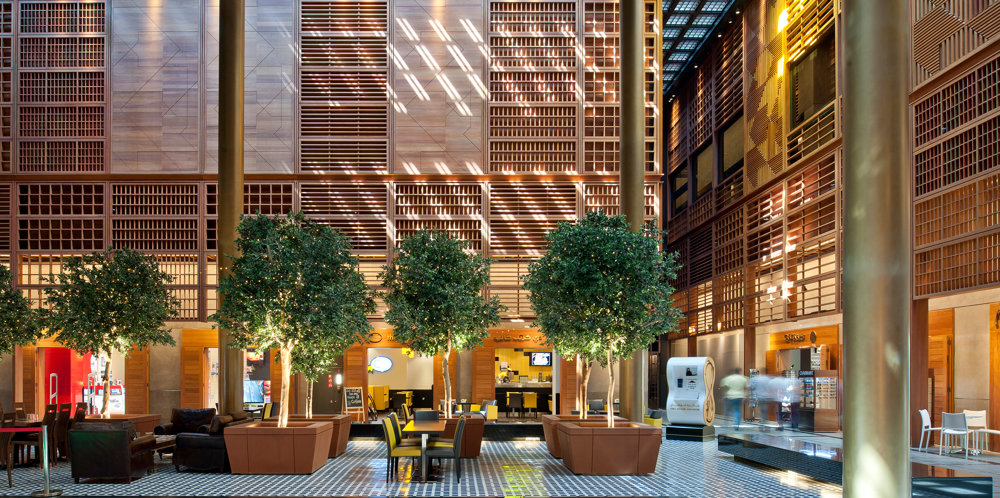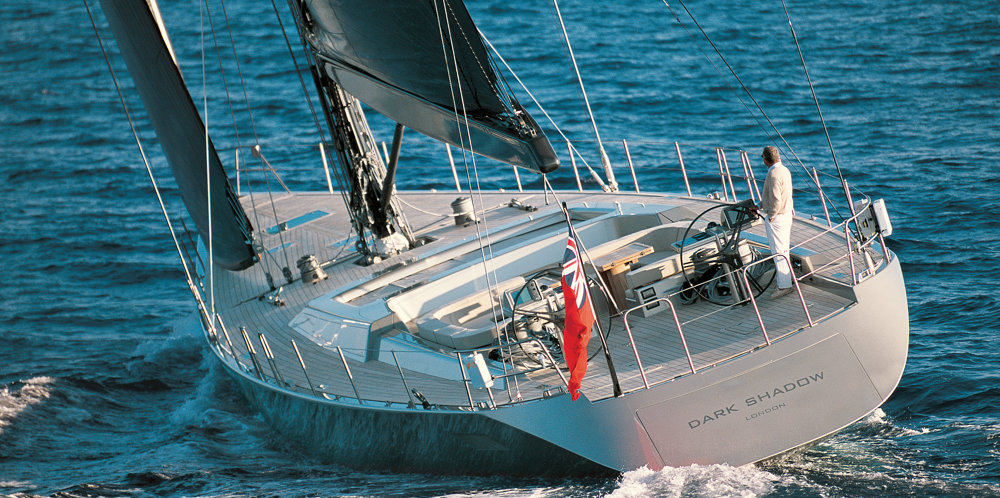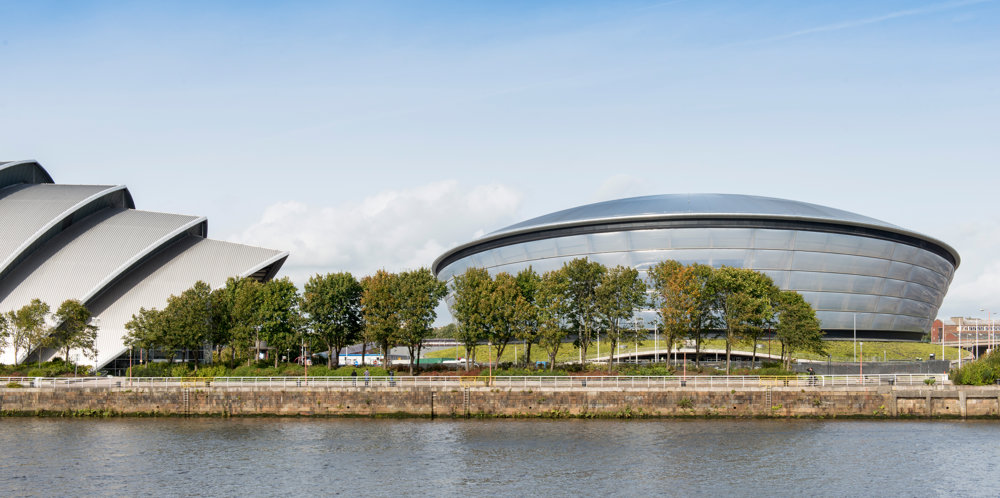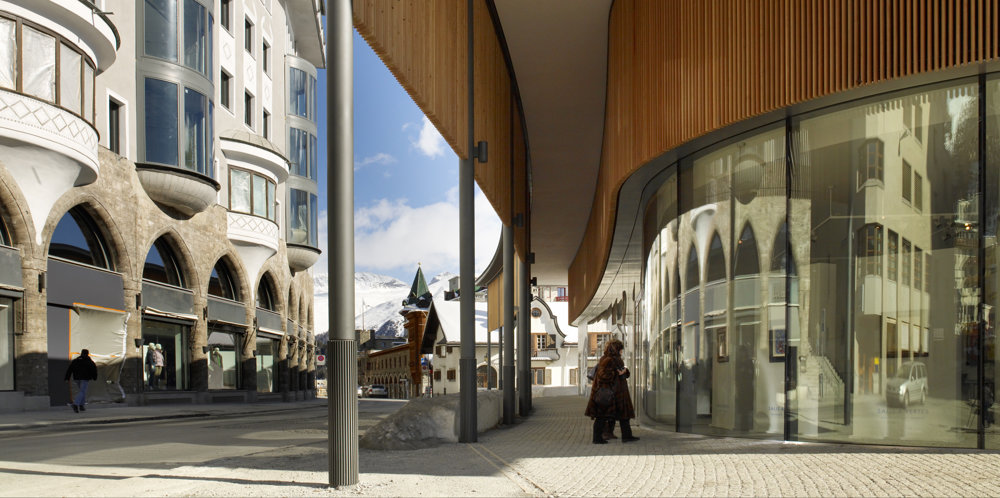The goal in designing the Post Haus was to create not just a luxurious restaurant and bar but something that St Moritz did not have: a meeting point that would be open throughout the day, popular in its own right but evocative of traditional alpine retreat, where people could relax, have a drink, a meal or just read the newspapers and soak up the magical view. The Post Haus forms an integral part of the Murezzan development in St Moritz, which involved the construction of a new building – the Chesa – and the recasting of two early-twentieth-century hotels – the Albana Hotel and Posthotel – for residential use. A demonstration of gentle adaptive renewal, it has helped to reinforce and renew the centre of St Moritz.
The Post Haus is located on the first floor of the Posthotel, and looks out through the old hotel’s gothic window arches towards the lake. With seating for 180 diners, it has two main areas, a casual bar with leather sofas and a more formal restaurant. Like Harry’s Bar in Venice, which changes character throughout the day, the Post Haus is a place to stop for a coffee in the morning, or lunch at a simple table in front of an open fire. In the evening the table cloths are set and the dining experience is more formal. The fireplace, framed by steel shelves stacked with logs, adds to the intimate atmosphere, providing a contemporary interpretation of a traditional Engadin stüva, or parlour.
The ambition was to produce a sequence of spaces that would feel comfortable and timeless, evoking Swiss simplicity. Some walls are accented in earth tones and the principal decoration comes from a sequence of large black and white images of the Engadin Valley by the legendary St Moritz photographer Albert Steiner. Every aspect of the interior, from the furniture to the open wood-burning grill that forms the centrepiece of the restaurant, was purpose designed and extensive use was made of local craftsmen to fabricate the fixtures, such as the grill and the fireplaces. The distinctive family of glass light fittings was conceived and originally custom-made in the Foster studio. Subsequently, the concept was extended to form the Illium range for the Italian lighting manufacturer, Nemo.









